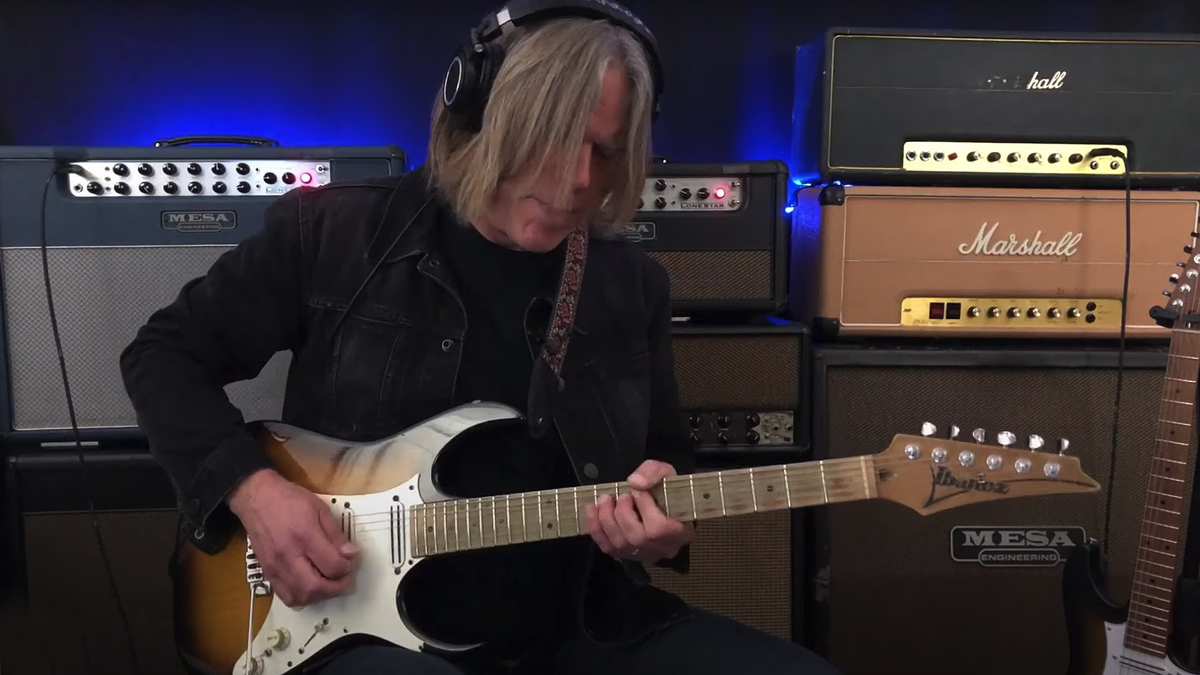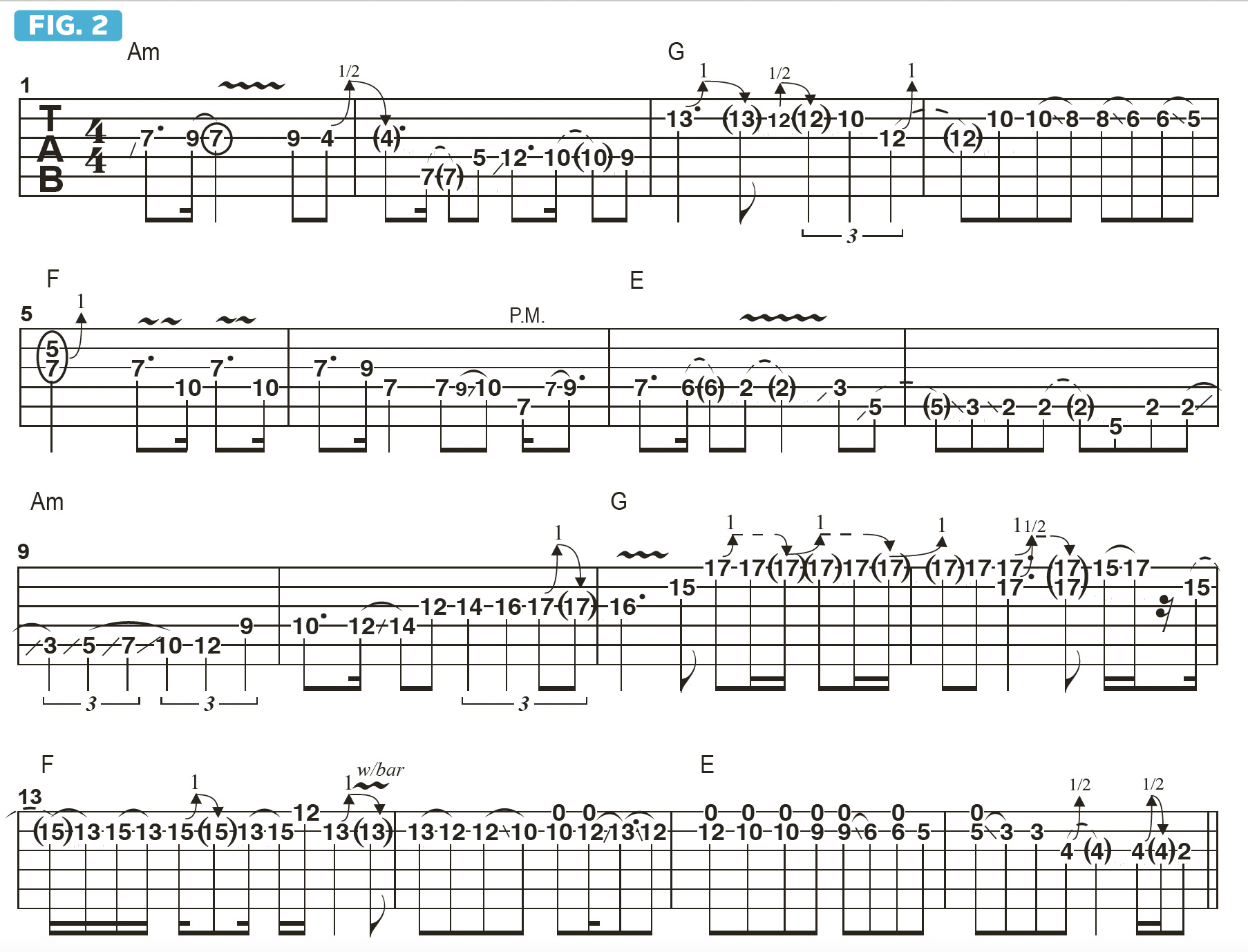How to develop improvised lines on single strings
Andy Timmons shows you how a little fretboard awareness liberates your lead playing

This month, I’d like to continue our exploration into the horizontal approach – moving up and down a single string – to crafting improvised solos. We started with one finger on one string, the benefit of which is that it immediately pulls you out of playing familiar “positional” phrases and forces you to listen, hear and think melodically, without being guided by physical and visual habits.
All players are best served by getting to the point where one can play with confidence and total freedom while ascending or descending each and every string. The first step in laying this foundation of fretboard visual awareness is to play a scale (or a series of scales) up and down each of the six strings, one at a time.
Sticking with the A natural minor scale (A, B, C, D, E, F, G) from last month, Figure 1 illustrates the scale played in ascending and descending fashion on alternating strings, starting on the low E string and working our way over to the high E. For extra practice and reinforcement, try “backtracking” up or down each string be-fore moving on to the next higher one.
The point here is not to create another type of “restraint,” by forcing oneself to use this approach only. When you familiarize yourself with moving up and down the fretboard in this way, in time it will serve to open up the entire palette of every area of the neck, so that no matter where you place your hand, you will have established a visual as well as an aural connection to where you are and what the sound will be.
You will then have no barriers. Any note that I play, I instantly hear what I want the next note to be, and my melodic intent carries me through the entire solo, no matter how long it may be.
After having learned all of the modes, in every key and fretboard position, it was this type of linear, horizontal approach that really afforded me the tools to express my musical ideas in a less encumbered way and lead me to a more melodic style overall.

Figure 2 presents an improvised solo played over the progression Am - G - F - E7 that we’ve been using as a template in the previous couple of lessons. In this example, I simply tried to play with absolute freedom, allowing the advantages of the linear approach to lead the way.
All the latest guitar news, interviews, lessons, reviews, deals and more, direct to your inbox!
It’s true exploration and a complete, unknown adventure once you start, and it’s the “not knowing where it’s headed” factor that I find to be the most rewarding. I actually don’t want to know the ending before it happens! I just want to help it get there in a musical way.
I begin over Am by accentuating the 4th, D, on both the G string, in bar 1, and the D string, in bar 2. Bars 3 and 4 are played over the underlying G chord, and the lines have one foot in Am and one in G, so to speak.
Throughout the rest of the solo, I aim to reference the triadic tones of each successive chord, but do so in a way that doesn’t sacrifice the overall musical story by sounding like I’m taking too much of a learned, or “academic” approach. So go exploring! It’s the best way to improvise.
Andy Timmons is a world-renowned guitarist known for his work with the Andy Timmons Band, as well as Danger Danger and Simon Phillips.

![Guitarists of the Year 2025 [L-R]: Nuno Bettencourt, Noel Gallagher, Buddy Guy, Kiki Wong, Dany Villarreal](https://cdn.mos.cms.futurecdn.net/6hxRXsBDNCPfdLGgr893pU.jpg)